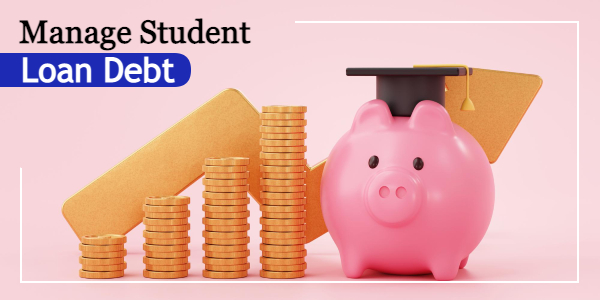Income-based repayment plans were introduced to alleviate the financial burden faced by federal student loan borrowers and prevent default.
People with high loan balances and low earnings typically use these plans. These plans set your monthly payment at a reasonable level based on your income and family size.
How Does Income-Based Repayment (IBR) Work?
Income Based Repayment (IBR) plans determine your monthly student loan payments based on your loan disbursement date and discretionary income.
Discretionary income is the difference between the adjusted gross income and a specific percentage of the federal poverty guideline for your family size and state of residence.
If you took out loans after July 1, 2014, you'd usually pay 10% of your discretionary income each month, but only if it's less than what you would pay under the standard 10-year plan.
For those who borrowed before July 1, 2014, payments will be 15% of discretionary income, as long as it's lower than the usual amount.
The length of time you'll be in an IBR plan also depends on when you took out the loan. For those who borrowed after July 1, 2014, the plan lasts for 20 years, but for those who borrowed before that date, it's a 25-year plan.
In April 2022, President Biden changed the Income-Based Repayment (IBR) plan, leading to expectations that 40,000 borrowers would have their federal student loans immediately forgiven. However, it's yet to be confirmed if many people have had their loans forgiven due to these changes.
It's worth noting that while the 40,000 borrowers in question may have had lower monthly payments, they have also paid more than those who paid off their loans in half the time.
Who can qualify for the IBR plan
To qualify for an income-based repayment plan, you must meet two requirements:
- You must have a federal student loan that qualifies.
- Your federal loan debt must be either higher than your annual discretionary income or make up a large portion of it.
It's important to note that Parent PLUS loans for undergraduate students and Direct Consolidation loans that paid off undergraduate PLUS student loans are not eligible for IBR. However, Parent PLUS loans for graduate or professional students do qualify.
Finally, you need to have a certain debt-to-income ratio. Your monthly payment under the IBR plan must be at most 10-15 % of your discretionary income compared to the payment amount under a standard 10-year repayment plan.
Benefits of Income-Based Repayment Plans
Reduced monthly payments
The Income-Based Repayment (IBR) program helps reduce your monthly federal student loan payments to an affordable amount. This can provide relief by freeing up more money in your budget and making it easier to manage your finances if you previously had difficulty doing so.
"I think it's a great way to manage student loan debt in a way that suits your budget. The biggest benefit is that your monthly payments are based on your income and family size, so you don't have to worry about making payments that are too large for your budget, which makes it easier to keep up with payments since they're more manageable." said Shaun Connell, Founder of Writing Tips Institute.
Avoidance of default
IBR can help lower your risk of defaulting on your student loan by making your payments more manageable and affordable based on your current financial situation. If you do not make payments, the student loan balance will grow over time as unpaid interest accumulates.
Potential forgiveness of remaining loan balance
Any remaining balance on your loan may be forgiven after making consistent, on-time payments for a set period, typically 20-25 years. Remember, however, that any amount forgiven will be considered taxable income.
Income contingent repayment
In contrast to other repayment plans, IBR payments are adjusted annually based on the borrower's current income and family size. If the borrower's income falls, so will their monthly payments under IBR, providing financial relief during difficult times.
Drawbacks of Income-Based Repayment Plans
Potentially paying more interest over time
While IBR can provide some short-term relief, it can also lead to paying more interest over the life of the loan. This is because interest continues to accrue on the loan balance over the more extended repayment period, adding to the total cost of the loan.
"It can take longer to pay off your loans than the standard 10-year repayment plan. This means you could end up paying more in the long run due to interest accruing over time." added Shaun.
Brian Nibley, Freelance Writer and Content Marketer from BDN Content, said, "while being on an IBR plan can be helpful in the short term, it could potentially create even more of a burden if you start making more money in the future, as your overall loan balance could grow by quite a bit."
Possible negative impact on credit score
Enrolling in an IBR plan can indicate to credit bureaus that a borrower is experiencing financial difficulties and may be unable to make payments. This can also hurt their credit score. However, for some borrowers, the benefits of lower monthly payments provided by IBR may outweigh the potential negative impact on their credit score.
Confusing eligibility criteria and application process
One of the potential disadvantages of IBR is that the eligibility criteria and application process can be complex for borrowers to understand.
Borrowers must have a partial financial hardship to be eligible for IBR, meaning their monthly payments under a standard 10-year repayment plan must be higher than what they would pay under IBR. The specific criteria for determining partial financial hardship vary depending on the IBR plan and the borrower's loan type, and this information can be challenging to find or understand.
To remain in the plan, you must provide updated information about your income and family size each year. You may also be required to reapply for IBR if circumstances change, such as marriage or childbirth.
Choosing the Right Income-Driven Repayment Plan
Income-based repayment is only one of the four total income-driven repayment plans available. The other options are Income-Contingent Repayment (ICR), Pay-As-You-Earn Repayment (PAYE), and Revised Pay-As-You-Earn Repayment (REPAYE).
Let's look at how these other options work to help you decide whether IBR is the best option for you.
Income-Contingent Repayment (ICR)
How ICR differs from IBR
The monthly payment amount in ICR is determined by the borrower's income, family size, and total student loan debt. The borrower's income and family size determine the monthly payment in IBR.
The monthly payment amount in ICR is capped at the amount payable under a fixed payment plan over a 25-year term. There is no set limit on the monthly payment amount in IBR.
To be eligible for ICR, a borrower must have a Direct Loan, a type of federal student loan. IBR is available for both Direct Loans and loans from the Federal Family Education Loan (FFEL) Program.
Loan forgiveness is available in the ICR after 25 years of qualifying payments. Loan forgiveness is available in IBR after 20 or 25 years, depending on when the loan was taken out.
When is it better to use ICR instead of IBR?
ICR may be a better option for borrowers with a high debt-to-income ratio and a large federal student loan debt because it allows for more flexibility in monthly payments.
If a borrower has a Direct Loan and wants to benefit from loan forgiveness, ICR may be a better option because it offers loan forgiveness after 25 years of qualifying payments.
IBR may be a better option if a borrower has a consistent income and wishes to make larger monthly payments to repay their loan faster.
Ultimately, your choice between ICR and IBR will be determined by your financial circumstances and goals.
Pay-As-You-Earn Repayment (PAYE)
The Pay as You Earn (PAYE) program offers a solution for reducing the monthly federal student loan payment by capping it at 10 percent of the borrower's discretionary income.
Borrowers eligible for PAYE can expect their monthly loan payments to be two-thirds lower than what they would pay under the Income-Based Repayment (IBR) plan.
Additionally, after 20 years of making monthly payments, any remaining student loan balance is forgiven.
To be eligible for the PAYE program, the borrower must have taken out their first federal student loan after October 1, 2007, and have received a Direct Loan or Direct Consolidation Loan after October 1, 2011.
PAYE vs. IBR
In some ways, the Pay As You Earn Plan triumphs over Income-Based Repayment: It reduces your monthly payments to 10% of your discretionary income and provides loan forgiveness after 20 years, regardless of when you borrowed the loans.
However, qualifying for PAYE can be difficult for some borrowers. Meanwhile, IBR has a more straightforward overall process, such as not requiring loan consolidation before applying. You can talk to your loan servicer to determine which option is the right option for you.
Revised Pay-As-You-Earn Repayment (REPAYE)
The REPAY plan is comparable to other programs in that it links monthly student loan payments to income and family size, allowing many borrowers to have lower payments. Unlike other plans, it does not have an income threshold, so it is available to a wide range of borrowers. With no cap, the monthly payments are set at 10% of discretionary income.
REPAYE is available to borrowers with both graduate and undergraduate loans, and it's an appealing option for borrowers with a large loan balance in relation to their income or whose income has decreased since leaving school.
Conclusion
Income-based repayment plans can help you manage your student loan debt. They provide the advantages of lower monthly payments, loan forgiveness, and the ability to adjust payments based on changes in income. However, these plans have drawbacks, such as paying more interest over the life of the loan, potential tax implications from loan forgiveness, and loan eligibility restrictions.
Before deciding, you should carefully weigh the benefits and drawbacks of income-based repayment plans and your personal financial situation. It's also a good idea to consult with a financial advisor or loan counselor to figure out the best way to manage student loan debt.









